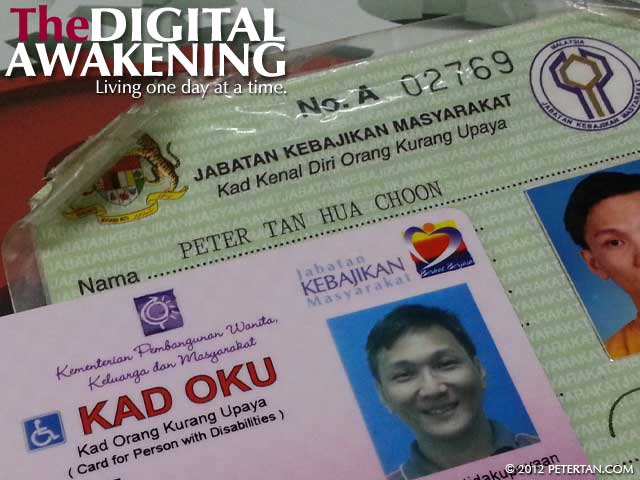My first Kad Kenal Diri Orang Kurang Upaya (Identity Card for Person with Disabilities) was issued in 1995. It is a laminated piece of paper card with my photograph, personal particulars and signature. The card measures 4.25″ x 3.5″. It is big and could not fit into my wallet. The most memorable part of this card is that it was presented to me by the then Governor of Penang Tun Hamdan Sheikh Tahir in an official ceremony at the Dewan Sri Pinang in 1995.

New and old Card for Person with Disabilities (Kad OKU)
The card has seen better days. The corners of the laminate have started to peel apart due to wear and tear and from being improperly kept due to its size. I had wanted to have it replaced with a newer laminated card that is smaller but have never gotten to doing it. When Wuan was on leave in June, we decided to take a long drive down to the Jabatan Kebajikan Masyarakat (JKM) in Kajang to apply for the latest version of the card and change my address from Penang to Pandan Perdana.
It was an easy process. I had to fill up a form, submit it with a photocopy of my identity card, had my photograph taken and then told to wait for the letter informing me to collect the card. Some time in August, the letter finally came. We went on another long drive to collect it from Kajang. It is now called Kad OKU or Kad Orang Kurang Upaya (Card for Person with Disabilities). This plastic card certainly appears more durable as compared to the previous laminated ones. The size of this new card is similar to the identity card and driving license and fits easily into my wallet.
